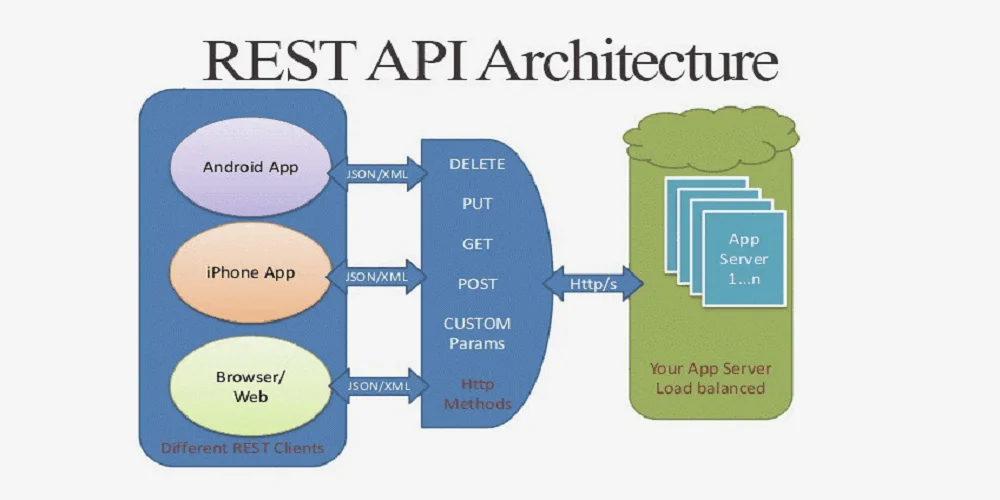Django, is a web framework that is built on Python and is considered to be open-source and affordable. As a result, you will be able to devote more of your attention to building your application rather than having to start from scratch when it comes to web development. The Django REST outline is a fantastic selection in case one is already acquainted with Django structure.
Django utilizes applications including class-based views, emerges, models validated, QuerySet and a wide range of additional solutions are included in this category. They are based on the class-based opinions that Django web development provides. Django REST Framework allows developers to rapidly establish Application Programming Interfaces (APIs) by creating simple Python classes known as serializers. These serializers provide data validation, serialization, and deserialization, which guarantees that the data obtained via the input and the data obtained through the output are both consistent and secure.
What is REST API?
REST is an acronym that is understood as “Representational State Transfer.” They are protocols that are specified for listing, creating, modifying, and removing data on your server using various HTTP methods. Additionally, it is a standard way to represent data across many platforms so that it can be used to develop a variety of applications. Through an interface known as the API, which is an acronym for Application Programming Interface, data may be delivered in a variety of forms such as JSON, XML, or HTML. This interface enables clients to make requests through various endpoints, with the expectation that they would get the essential outputs of data upon receiving a reaction.
JSON is a format that is always applied for a typical response that comes from a REST API’s last points. A backend developer has a significant difficulty when we talk about serializing or flattening the data that is generated by a model that contains intricate connections. We can construct such things in Django from the ground up; however, the Django Rest Framework offers a fantastic method for handling these things more straightforwardly. Additionally, verification and approval concerns are having the API endpoints that are exposed, which are automatically handled by the Django Rest Framework (DRF).
Understanding the Significance of Developing Safe APIs
The ability of a micro-framework for API to facilitate HTTP communication without blocking or concealing it is the most advantageous characteristic of such a framework. In this manner, you will be able to view the code if you discover a flaw in your application and believe that the bottle is the origin of the problem. A strong development team will find this to be a very valuable advantage. When you need it, you can comprehend the whole of the structure.
- The fast growth of digital alteration and the extensive use of API interfaces (APIs) have led to the emergence of a new age in which methods and services are linked. This greater dependence on API does, however, bring up a set of different concerns in terms of security.
- As firms experience digital alteration, the need for all-in-one incorporation develops to be more important. Although APIs make this connection simple, they also expose critical data, which highlights the need to apply stringent safety procedures.
- Cloud-based apps are highly reliant on application programming interfaces (APIs) for data sharing and interaction. Vulnerabilities in the security of these application programming interfaces (APIs) can have far-reaching consequences, hence compromising the security posture of whole cloud networks.
- Specific vulnerabilities of application programming interfaces (APIs) APIs have their own set of safety difficulties, and typical security solutions that are built for web apps might not be enough. Attackers can take advantage of API vulnerabilities that are not sufficiently handled by general safety measures; hence, it is required to provide specific alternatives for API security.
- API security is further complicated by the proliferation of microservices designs, which are a part of multifaceted networks. Using application programming interfaces (APIs), a multitude of linked microservices interact with one another, resulting in a complex web of possible defenses.
- The increased usage of apps increases the attack surface that hackers have access to. As a result of the fact that every API endpoint develops to be a possible access point, constant monitoring and prevention are vital.
- The absence of defined standards in API development might result in variations in the measures of safety measures. The maintenance of a consistent and safe API background is made more difficult by the variety of the API landscape.
- Consequently of their frequent reliance on APIs offered by other parties, organizations often expose themselves to external influences that are beyond their direct control. There is a potential for serious risks to arise from security flaws in these remote APIs.
Fundamental ideas behind REST architecture

It is vital to have a solid understanding of the fundamental concepts of REST architecture to construct better APIs that emphasize both speed and security. REST, which stands for “Representational State Transfer,” is a style of architecture that offers a set of values for designing of online services. Developers can construct application programming interfaces (APIs) that are accessible, easily maintained, and extensible if they adhere to these principles.
The implementation of a client-kind server communication architecture that does not need state information is the fundamental premise of REST. APIs that make use of the REST protocol need to have a method of communicating with resources that is standardized and uniform. Among them comprise the use of conventional HTTP methods like GET, POST, PUT, and DELETE techniques. Another essential component of REST design is its emphasis on security. The implementation of identification and access procedures is the responsibility of developers.
Performance Efficiency
As a last point of consideration, performance efficiency is an essential component of REST design. Once replies have been appropriately cached, clients can reuse data that they have already acquired, which reduces the frequency with which they must make requests to the server. REST APIs typically provide static resources; but, subject to the specifics of the situation, responses can occasionally have the code which might run (for instance, Java applets). Whenever it is necessary to do so, the code should be executed under circumstances like the above.
Bottom Line
Django is a framework that provides a procedure that is ordered and structured. While the tech takes care of all the other services, the specialists are only able to concentrate on individualized features. Additionally, REST is the straightforward and adaptable method of constructing a web (API). There is no such thing as an accepted norm or protocol; instead, it is a collection of architectural limitations.





